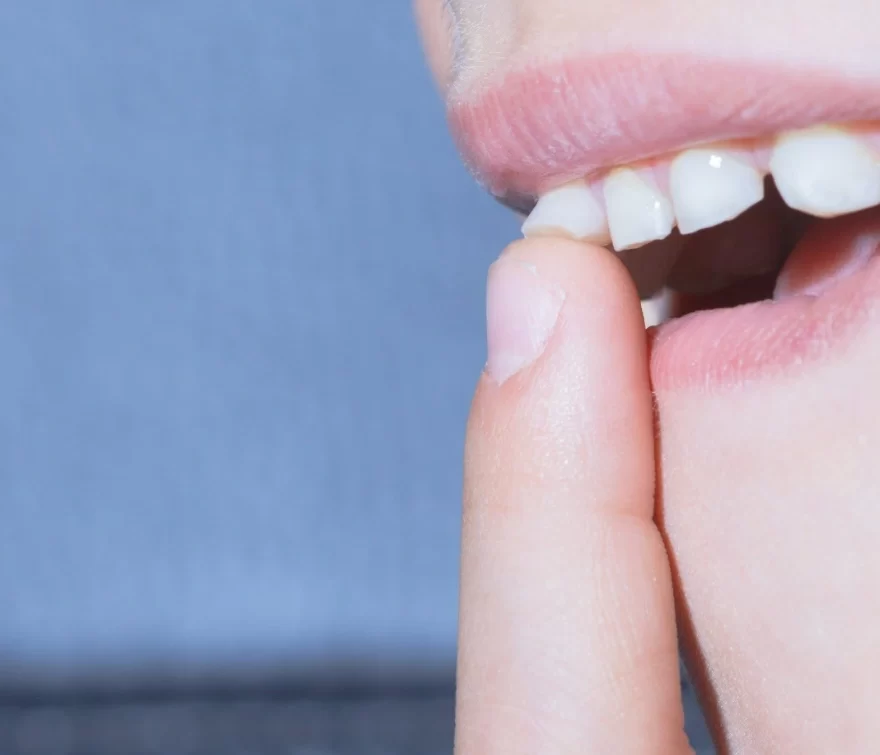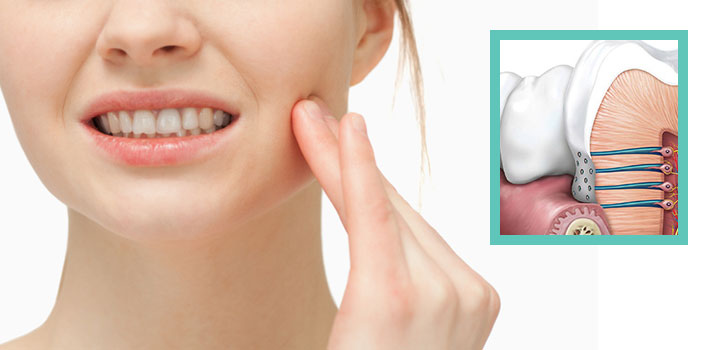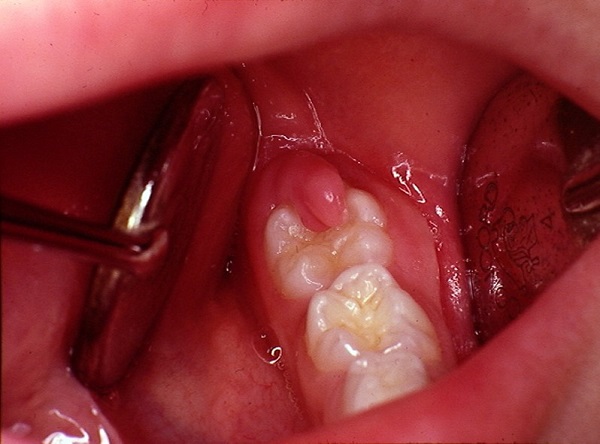my front tooth is loose what can i do

My Front Tooth is Loose: What Can I Do?
A loose front tooth can be a cause of significant concern for anyone. Whether due to trauma, gum disease, or other factors, a loose front tooth requires prompt attention to prevent further complications. This comprehensive guide will explore the causes, symptoms, treatment options, and preventive measures for a loose front tooth. By understanding these aspects, you can take the necessary steps to protect your dental health and maintain a confident smile.
Understanding Tooth Mobility
Tooth mobility refers to the degree to which a tooth can move in its socket. While slight mobility is normal due to the ligament attachment that allows for minor movements during chewing, noticeable looseness indicates a problem. When someone says, “My front tooth is loose,” it often means the tooth has become significantly mobile and may even be at risk of falling out.
Causes of a Loose Front Tooth
- Trauma or Injury: A common cause of a loose front tooth is trauma. This could result from a fall, an accident, or a blow to the face. Such impacts can damage the tooth’s supporting structures, leading to mobility.
- Gum Disease: Periodontal disease is a major cause of tooth looseness. It involves the infection and inflammation of the gums and supporting bone structures, leading to the deterioration of these tissues and resulting in a loose front tooth.
- Bruxism (Teeth Grinding): Chronic grinding or clenching of teeth, known as bruxism, can exert excessive pressure on the teeth and their supporting structures, causing a front tooth to become loose over time.
- Orthodontic Treatment: While undergoing orthodontic treatment, such as braces, it is normal for teeth to be slightly loose as they move into new positions. However, excessive looseness should be evaluated by a dentist.
- Tooth Decay: Severe decay can undermine the structural integrity of a tooth, leading to looseness. When decay reaches the root, it can weaken the tooth’s attachment to the bone.
- Bone Loss: Osteoporosis or other conditions that result in bone density loss can affect the jawbone, leading to loose teeth.
- Hormonal Changes: Hormonal fluctuations during pregnancy or menopause can affect the periodontal ligament and bone, sometimes resulting in loose teeth.
Symptoms of a Loose Front Tooth
When a person realizes, “My front tooth is loose,” they may experience various symptoms alongside the mobility of the tooth. These can include:
- Visible Movement: The most obvious sign is the noticeable movement of the tooth when touched or during eating and speaking.
- Pain or Discomfort: A loose front tooth can cause discomfort or pain, especially when chewing or applying pressure to the tooth.
- Swollen Gums: Inflammation and swelling of the gums around the loose tooth can indicate an underlying issue, such as gum disease or infection.
- Bleeding Gums: Gums that bleed easily when brushing or flossing can be a sign of periodontal disease, which may contribute to tooth looseness.
- Receding Gums: Gum recession, where the gums pull away from the tooth, can expose the roots and make the tooth appear longer. This condition often accompanies periodontal disease.
- Pus or Discharge: The presence of pus or other discharge around the loose tooth can indicate an infection.
What to Do if Your Front Tooth is Loose
If you find yourself saying, “My front tooth is loose,” it is crucial to take immediate action to address the problem. Here are steps to follow:
- Avoid Excessive Force: Refrain from wiggling or putting pressure on the loose tooth. Avoid chewing on hard foods and using the affected tooth to bite into anything.
- Maintain Oral Hygiene: Continue to brush and floss gently around the loose tooth. Good oral hygiene can help prevent further complications.
- Rinse with Salt Water: Rinsing your mouth with a saltwater solution can help reduce inflammation and kill bacteria. Mix a teaspoon of salt in a cup of warm water and swish it around your mouth for about 30 seconds before spitting it out.Can salt water tighten loose teeth?
- Apply a Cold Compress: If there is swelling or discomfort, apply a cold compress to the outside of your mouth near the affected area. This can help reduce inflammation and numb the pain.
- See a Dentist Immediately: It is crucial to see a dentist as soon as possible. They can assess the severity of the issue and provide appropriate treatment to stabilize the tooth and address any underlying problems.
Dental Treatments for a Loose Front Tooth
Upon visiting the dentist and explaining, “My front tooth is loose,” several treatment options may be considered, depending on the cause and severity of the looseness:
- Splinting: This involves attaching the loose tooth to adjacent stable teeth using a special dental adhesive and sometimes a flexible wire or fiber splint. Splinting helps stabilize the tooth and allows the supporting structures to heal.
- Deep Cleaning (Scaling and Root Planing): If gum disease is the cause, the dentist may perform a deep cleaning procedure to remove plaque and tartar from below the gumline and smooth the root surfaces. This can help the gums reattach to the tooth.
- Gum Surgery: In advanced cases of periodontal disease, surgical intervention may be necessary. Procedures like flap surgery or bone grafting can help restore the supporting structures and stabilize the tooth.
- Root Canal Therapy: If the looseness is due to an infection or damage to the tooth’s pulp, root canal therapy may be required. This involves removing the infected pulp, cleaning the tooth’s interior, and sealing it.
- Orthodontic Treatment: If misalignment is contributing to the problem, orthodontic treatment may be recommended to correct the alignment and distribute biting forces evenly.
- Tooth Extraction and Replacement: In cases where the tooth cannot be saved, extraction may be necessary. The dentist will discuss replacement options, such as dental implants, bridges, or dentures, to restore function and aesthetics.
Preventing a Loose Front Tooth
Preventing a loose front tooth involves taking proactive measures to maintain good oral health and protect your teeth from trauma and disease. Here are some preventive strategies:
- Practice Good Oral Hygiene: Brush your teeth at least twice a day with fluoride toothpaste and floss daily to remove plaque and prevent gum disease.
- Regular Dental Checkups: Visit your dentist regularly for checkups and professional cleanings. Early detection of gum disease and other dental issues can prevent tooth looseness.
- Wear a Mouthguard: If you participate in contact sports or grind your teeth at night, wearing a mouthguard can protect your teeth from trauma and excessive pressure.
- Healthy Diet: Maintain a balanced diet rich in vitamins and minerals that support oral health, such as calcium and vitamin D. Avoid excessive consumption of sugary and acidic foods and beverages.
- Quit Smoking: Smoking is a significant risk factor for gum disease, which can lead to tooth looseness. Quitting smoking can improve your overall oral health.
- Manage Medical Conditions: Conditions like diabetes and osteoporosis can affect oral health. Work with your healthcare provider to manage these conditions effectively.
- Avoid Bad Habits: Refrain from using your teeth to open packages, biting your nails, or chewing on hard objects, as these habits can damage the teeth and their supporting structures.
The Role of Dental Professionals
When dealing with a loose front tooth, dental professionals play a crucial role in diagnosis, treatment, and prevention. Their expertise ensures that the underlying cause of the looseness is identified and addressed appropriately.
- Diagnostic Tools: Dentists use various diagnostic tools, such as X-rays and periodontal probing, to assess the extent of tooth mobility and the health of the supporting structures. This helps in formulating an effective treatment plan.
- Tailored Treatment Plans: Based on the diagnosis, the dentist will create a tailored treatment plan that addresses the specific needs of the patient. This may involve multiple procedures to stabilize the tooth and treat any underlying issues.
- Education and Guidance: Dental professionals provide valuable education on maintaining oral health and preventing future issues. They can offer guidance on proper brushing and flossing techniques, dietary recommendations, and lifestyle changes.
- Follow-Up Care: After treatment, regular follow-up appointments are essential to monitor the progress of healing and ensure that the tooth remains stable. The dentist may also adjust the treatment plan as needed.
Psychological Impact of a Loose Front Tooth
Saying, “My front tooth is loose,” can have psychological implications beyond the physical discomfort. The front teeth are prominent when speaking and smiling, and any issue with these teeth can affect a person’s self-esteem and confidence.
- Self-Consciousness: A loose front tooth can make individuals self-conscious about their appearance. They may feel embarrassed to smile or speak in public, affecting their social interactions.
- Anxiety: The fear of losing a front tooth or needing extensive dental work can cause anxiety. This anxiety can be exacerbated by concerns about the cost and time involved in treatment.
- Impact on Professional Life: In professions where appearance and communication are important, a loose front tooth can affect job performance and opportunities. Individuals may avoid public speaking or networking events.
- Mental Health: Long-term issues with self-esteem and anxiety related to dental problems can contribute to broader mental health concerns, such as depression and social withdrawal.
Addressing these psychological impacts requires a comprehensive approach that includes effective dental treatment and support for mental well-being. Dentists can play a crucial role by providing reassurance, understanding, and prompt care.
Advances in Dental Technology for Treating Loose Teeth
Modern dental technology has significantly improved the diagnosis and treatment of loose teeth, offering more efficient, comfortable, and effective solutions for patients. Here are some notable advancements:
- Laser Therapy: Lasers can be used to treat gum disease and promote healing. Laser therapy is less invasive than traditional surgery, reducing pain and recovery time.
- Digital Imaging: Advanced imaging techniques, such as cone-beam computed tomography (CBCT), provide detailed 3D images of the teeth and supporting structures. This aids in precise diagnosis and treatment planning.
- Minimally Invasive Techniques: Techniques such as pinhole surgery for gum recession offer less invasive options for treating periodontal issues, resulting in quicker recovery times and less discomfort.
- Regenerative Treatments: Advances in regenerative medicine, such as the use of growth factors and stem cells, can promote the regeneration of bone and gum tissue, helping to stabilize loose teeth.
- Biocompatible Materials: New materials used in dental treatments are more biocompatible, reducing the risk of allergic reactions and improving the longevity of restorations.
Home Remedies and Natural Support
While professional dental care is essential for treating a loose front tooth, some home remedies and natural approaches can support oral health and complement dental treatments:
- Saltwater Rinse: Rinsing with a saltwater solution can reduce inflammation and kill bacteria. Use it several times a day to keep the mouth clean and support healing.
- Oil Pulling: Swishing oil, such as coconut or sesame oil, in the mouth for about 20 minutes can help reduce bacteria and promote oral health. This traditional practice can be part of a daily routine.
- Turmeric Paste: Turmeric has anti-inflammatory and antimicrobial properties. Applying a paste of turmeric and water to the affected area can help reduce inflammation and infection.
- Garlic: Garlic has natural antibacterial properties. Chewing a garlic clove or applying garlic oil to the affected area can help fight infection and reduce discomfort.
- Aloe Vera Gel: Aloe vera gel can soothe inflamed gums and support healing. Apply it directly to the gums around the loose tooth.
- Hydration: Staying hydrated helps maintain saliva production, which is essential for neutralizing acids and washing away food particles.
- Vitamin C and D: Ensuring adequate intake of vitamins C and D can support gum health and bone density. Foods rich in these vitamins or supplements can be beneficial.
Long-Term Care and Maintenance
After addressing a loose front tooth, maintaining long-term dental health requires ongoing care and attention. Here are strategies to ensure your teeth remain healthy and stable:
- Consistent Oral Hygiene: Continue to brush at least twice a day and floss daily. Use an electric toothbrush for more effective plaque removal.
- Regular Dental Visits: Schedule regular checkups and cleanings with your dentist, typically every six months. Early detection of issues can prevent recurrence of tooth looseness.
- Use of Dental Products: Incorporate products like fluoride toothpaste and mouth rinses into your daily routine. Ask your dentist about specific products that may be beneficial for your individual needs.
- Healthy Diet: Maintain a balanced diet and limit sugary snacks and beverages. Pay attention to hidden sugars in processed foods and opt for healthier alternatives.
- Manage Medical Conditions: Conditions like diabetes and osteoporosis can affect oral health. Work with your healthcare provider to manage these conditions effectively.
- Protect Your Teeth: If you play sports or engage in activities that risk dental injury, use a mouthguard to protect your teeth. Additionally, consider wearing a night guard if you grind your teeth while sleeping.
- Stay Informed: Stay updated on the latest dental health information and advancements. Ask your dentist questions and seek out reliable sources for information on maintaining oral health.
Conclusion
When someone says, “My front tooth is loose,” it is essential to address the issue promptly to prevent further complications. Understanding the causes, symptoms, and treatment options for a loose front tooth is crucial for maintaining a healthy and attractive smile. By practicing good oral hygiene, seeking professional dental care, and taking preventive measures, you can protect your teeth from becoming loose and ensure long-term dental health. Remember, your front teeth play a significant role in your overall appearance and confidence, so taking care of them is paramount. With the right knowledge and care, you can keep your smile bright and healthy for years to come.
Related to read:
Best Oral Hygiene Practices For Optimum Oral Health.
Bruxism: Teeth grinding causes treatment and prevention.
How to keep your gums healthy and disease-free?
References
To ensure the information provided is accurate and up-to-date, the following sources were referenced:
- American Dental Association. (n.d.). Plaque and Tartar. Retrieved from ADA website
- Mayo Clinic. (n.d.). Dental Plaque. Retrieved from Mayo Clinic website
- National Institute of Dental and Craniofacial Research. (n.d.). Periodontal (Gum) Disease. Retrieved from NIDCR website
1. How do you fix a loose front tooth?
Fixing a loose front tooth typically requires professional dental care. Here are some common treatments:
- Splinting: The dentist can bond the loose tooth to adjacent teeth using a dental splint, providing stability and allowing the periodontal ligaments to heal.
- Scaling and Root Planing: If gum disease is the cause, deep cleaning procedures can remove plaque and tartar from below the gum line, promoting healing and tightening the tooth.
- Bone Grafting: In cases of bone loss, bone grafts may be used to support the tooth.
- Bite Adjustment: Adjusting the bite can reduce pressure on the loose tooth, allowing it to stabilize.
- Surgery: In severe cases, surgical intervention may be necessary to correct underlying issues.
2. How can I tighten my teeth?
To tighten loose teeth, it’s essential to address the underlying cause. Here are steps that can help:
- Professional Dental Care: Visit your dentist for a thorough evaluation and appropriate treatment such as splinting, scaling, and root planing.
- Good Oral Hygiene: Maintain a consistent oral hygiene routine, including brushing and flossing.
- Healthy Diet: Eat a diet rich in nutrients that support bone and gum health.
- Avoid Trauma: Avoid activities that can cause trauma to your teeth, such as biting hard objects or grinding your teeth.
3. Can weak teeth become strong again?
Yes, weak teeth can become stronger with proper care and treatment:
- Fluoride: Use fluoride toothpaste and mouth rinses to strengthen enamel.
- Good Oral Hygiene: Regular brushing and flossing prevent decay and gum disease.
- Diet: Consume foods rich in calcium, phosphorus, and vitamin D to support tooth health.
- Regular Dental Check-ups: Routine dental visits allow for early detection and treatment of problems that can weaken teeth.
4. Can a loose tooth heal on its own?
A loose tooth may heal on its own if the looseness is due to minor trauma and the periodontal ligaments are allowed to recover without further stress. However, if the looseness is caused by gum disease, significant trauma, or bone loss, professional dental treatment is necessary to address the underlying issue and promote healing.
Conclusion
Loose teeth, especially front teeth, can often be stabilized and saved with appropriate dental care and good oral hygiene practices. While natural remedies can support overall oral health, professional evaluation and treatment are essential to address the underlying causes of tooth looseness and achieve lasting results. Regular dental visits, a balanced diet, and avoiding habits that stress the teeth are crucial for maintaining strong and healthy teeth.
5. Can a dentist glue a loose tooth?
Dentists can use a technique called dental bonding or splinting to stabilize a loose tooth. In dental bonding, a composite resin is used to “glue” the loose tooth to adjacent teeth, providing support and stability. Splinting involves bonding a loose tooth to a neighboring tooth or teeth with a splint. These methods are effective in providing temporary stability while the underlying issue is treated.
6. Is it bad to lose a front tooth?
Losing a front tooth can have several negative consequences:
- Aesthetic Concerns: It can significantly impact the appearance of your smile and facial aesthetics.
- Functional Issues: Front teeth are important for biting and speaking. Losing a front tooth can affect these functions.
- Shifting of Teeth: Neighboring teeth may shift into the gap, leading to misalignment and bite issues.
- Bone Loss: The jawbone can start to resorb (shrink) in the area where the tooth was lost, which can affect the overall structure and stability of the jaw.
7. How can I speed up a loose tooth?
Speeding up the stabilization of a loose tooth involves addressing the root cause and following proper dental care. Here are steps to help stabilize a loose tooth:
- Visit a Dentist: Get a professional diagnosis and treatment plan.
- Good Oral Hygiene: Brush twice a day and floss daily to prevent plaque buildup.
- Diet: Eat a balanced diet rich in vitamins and minerals, particularly calcium and vitamin D.
- Avoid Hard Foods: Refrain from eating hard or sticky foods that can exacerbate the looseness.
- Use a Mouthguard: If you grind your teeth, using a mouthguard can reduce pressure on the teeth.
8. Why do I feel like my front teeth are moving?
Feeling like your front teeth are moving can be caused by several factors:
- Gum Disease: Inflammation and infection of the gums can weaken the supporting structures of the teeth.
- Trauma: Injury to the mouth can cause teeth to become loose or feel like they are moving.
- Bruxism: Grinding or clenching your teeth can put excessive pressure on the teeth, leading to mobility.
- Orthodontic Treatment: If you are undergoing orthodontic treatment, teeth may feel mobile as they are gradually shifted into new positions.
- Bone Loss: Loss of bone around the teeth, often due to periodontal disease, can cause teeth to become loose.
9. What foods tighten teeth?
While no foods can directly tighten loose teeth, a diet rich in certain nutrients can support overall oral health and strengthen the structures that hold teeth in place:
- Calcium-Rich Foods: Dairy products, leafy greens, and fortified plant-based milk can strengthen bones and teeth.
- Vitamin D: Fatty fish, egg yolks, and fortified foods help with calcium absorption.
- Vitamin C: Citrus fruits, berries, and vegetables support gum health.
- Phosphorus: Found in meat, fish, eggs, and dairy, phosphorus works with calcium to build strong bones and teeth.
- Antioxidant-Rich Foods: Fruits and vegetables with antioxidants can reduce inflammation and support gum health.
10. How to remove a wiggly tooth?
Removing a wiggly tooth, especially in children, can often be done at home if the tooth is very loose. Here’s how:
- Wiggle It: Encourage gentle wiggling with a clean finger or tongue to help loosen it further.
- Eat Crunchy Foods: Eating crunchy foods like apples or carrots can help naturally loosen the tooth.
- Use a Tissue: If the tooth is extremely loose, you can grasp it with a clean tissue and gently twist and pull. Make sure your hands and the tissue are clean to avoid infection.
- Professional Help: If the tooth is not coming out easily or causing pain, visit a dentist for safe removal.
Conclusion
Loose teeth can often be treated and stabilized with professional dental care and good oral hygiene practices. While certain home remedies can support oral health, addressing the underlying cause with the help of a dentist is crucial for effective and lasting results. Regular dental visits, a balanced diet, and avoiding habits that stress the teeth are essential for maintaining strong and healthy teeth.









